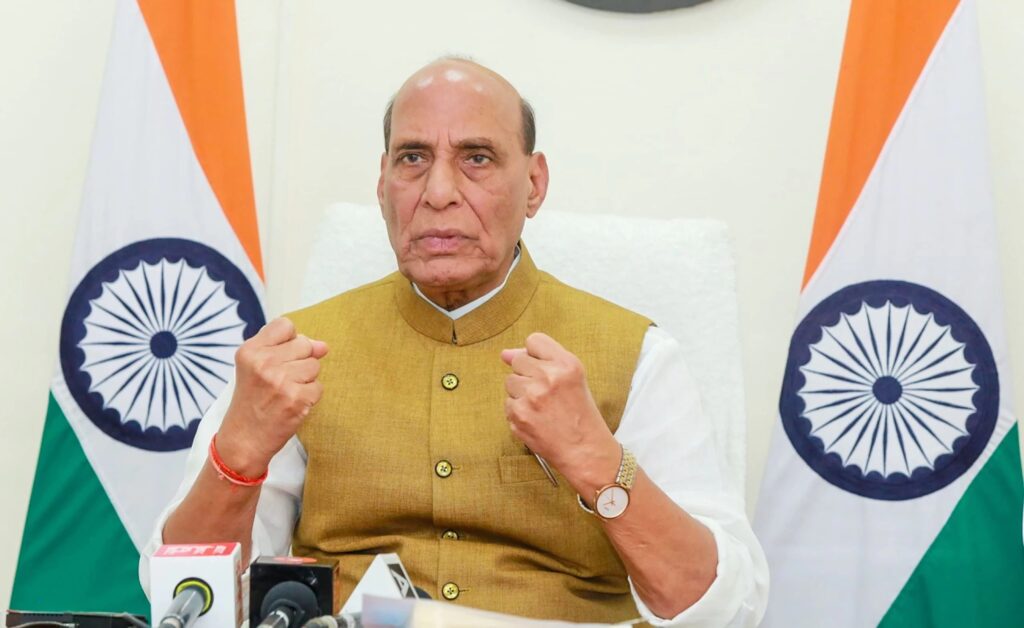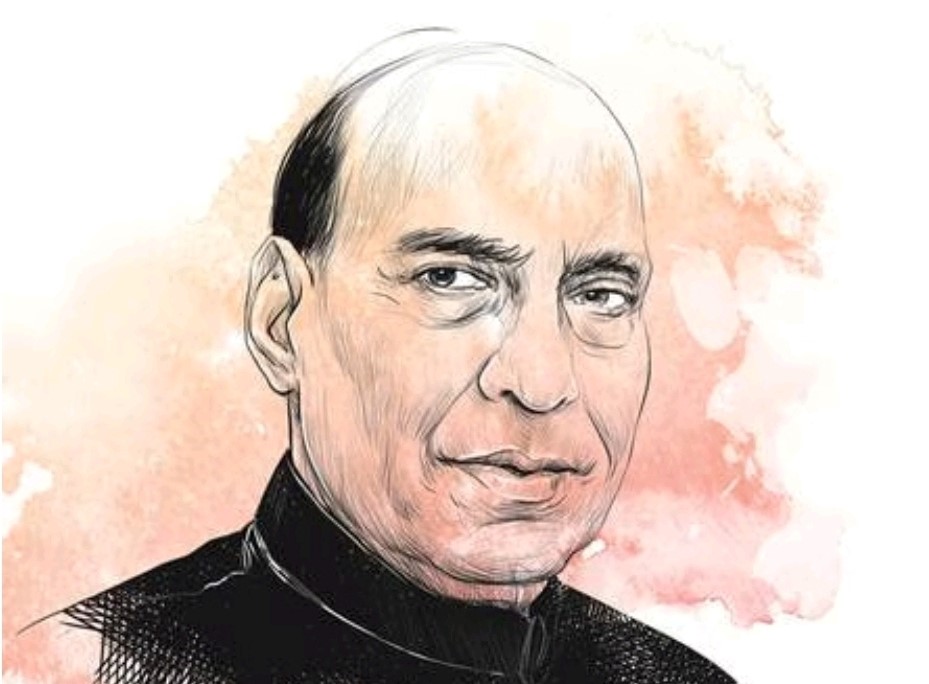By Ajaz Rashid
In a powerful and emotive address to the Lok Sabha, Defence Minister Rajnath Singh defended India’s retaliatory strike—Operation Sindoor—as a calibrated and historic response to the April 22 Pahalgam terror attack. Kicking off a 16-hour special debate, Singh laid out a gripping narrative of precision, restraint and resolve, framing the 22-minute cross-border mission as a turning point in India’s counter-terrorism doctrine. From mythic references to missile interceptions, he painted a picture of military might backed by political clarity. Operation Sindoor, he declared, “has only been paused,” warning Pakistan that India’s patience has limits and its threshold has changed—permanently.
Defence Minister Rajnath Singh on Monday opened the Lok Sabha’s 16-hour special debate on the April 22 Pahalgam terror attack and India’s retaliatory Operation Sindoor, delivering a 55-minute address that blended operational detail, historical context and political rebuttal. Below is a news-story reconstruction of the minister’s speech, preserving its substance and cadence.
A historic operation, not “just” a strike
Singh began by bowing to the armed forces and the 26 civilians—“including one Nepali tourist”—killed in Pahalgam. Calling the assault “a kutil, ghrinit udaharan of inhumanity,” he said India’s tolerance threshold had been breached.
He framed Operation Sindoor, executed in the pre-dawn hours of 7 May, as “a decisive and effective demonstration of our policy against terrorism… a reflection of India’s sovereignty, identity and duty towards its citizens”.
Nine targets, 22 minutes
After an “unrestricted” go-ahead from Prime Minister Narendra Modi at a tri-service chiefs’ meeting, the military studied “every aspect in depth” and selected an option designed to inflict “maximum damage on terrorists while ensuring zero harm to Pakistani civilians”.
- 9 terror infrastructure sites in Pakistan and Pakistan-occupied Kashmir were struck with precision‐guided munitions.
- 7 of the 9 were “completely destroyed,” Singh told the House.
- “Within 22 minutesthe entire mission was complete,” he added, drawing thumping of desks from Treasury benches.
Estimated militant fatalities exceeded 100, “and the real figure is likely higher,” Singh said, naming Jaish-e-Mohammed, Lashkar-e-Taiba and Hizbul Mujahideen cadres among the dead.

Pakistan’s response and the air-defence shield
Singh revealed that Pakistan attempted to escalate between 7 and 10 May, firing missiles, drones and long-range rockets at Indian military bases. India’s S-400s, Akash batteries and electronic warfare suites “completely foiled” every incoming strike—“not one important asset was hit,” he declared to applause.
The minister said Pakistan’s Director-General of Military Operations (DGMO) requested a halt on 10 May after Indian counter-strikes “rattled multiple airfields.” The ceasefire, formalised on 12 May via DGMO-level talks, was India’s decision “because our politico-military objectives were achieved,” not due to external pressure.
“Paused, not ended”
Operation Sindoor, Singh stressed, “has been paused, not terminated… If Pakistan indulges in fresh misadventure, the operation will resume”. He rejected U.S. President Donald Trump’s claim of brokering the ceasefire: “There was no such call between PM Modi and President Trump in that window,” he said, citing EAM S. Jaishankar’s clarification.
Political broadsides at the Opposition
Turning to domestic critics who asked how many Indian jets were lost, Singh said: “They never ask how many enemy aircraft came down. If you wish to question, ask whether Operation Sindoor succeeded—the answer is yes”.
Without naming Rahul Gandhi, he added: “When goals are lofty, minor issues—a broken pencil or lost pen—should not preoccupy us; only the result matters”.
Invoking scripture and history
The speech was peppered with literary flourishes. Quoting the Ramcharitmanas line “Jin mohi maara, tin mohi maare,” he likened India’s calibrated retaliation to Hanuman’s scorched-earth strike, targeting only those who harmed innocents.
He also cited V. S. Naipaul’s aphorism that Pakistan lives in an “alternate, contrasting reality where war is peace” to argue that cross-border terrorism is a strategic instrument, not “random madness”.
India’s growing muscle
Singh linked military assertiveness to economic growth: “India is the world’s fourth-largest economy today and will be third by 2028, Morgan Stanley says. Defence self-reliance has multiplied many-fold since 2014”. He called Operation Sindoor “a symbol of that capability”.
Key takeaways from the minister’s address
| Theme | Singh’s principal claim | Supporting detail |
| Objectives met | Terror camps destroyed; >100 militants killed | 9 targets hit in 22 min; evidence released within hours |
| Civilian safety | Pakistani civilian sites spared | Target selection emphasised zero collateral damage |
| Air defence success | All incoming Pak missiles/drones intercepted | S-400, Akash, electronic warfare grid lauded |
| No external pressure | Ceasefire on India’s terms | DGMO channel; U.S. mediation claim denied |
| Future posture | Operation only paused | Will restart if Pakistan “misbehaves” |
By the time Singh concluded, he had woven tactical numbers, mythic imagery and partisan shots into a single narrative: India hit hard, protected civilians, deterred escalation and remains ready to strike again. Whether the Opposition is convinced will play out in the remaining hours of the marathon debate, but for the record, the Defence Minister’s message was unequivocal: “Bharat will no longer bow to nuclear blackmail, and the ‘sindoor’ of its mothers is now etched into its security doctrine.”

